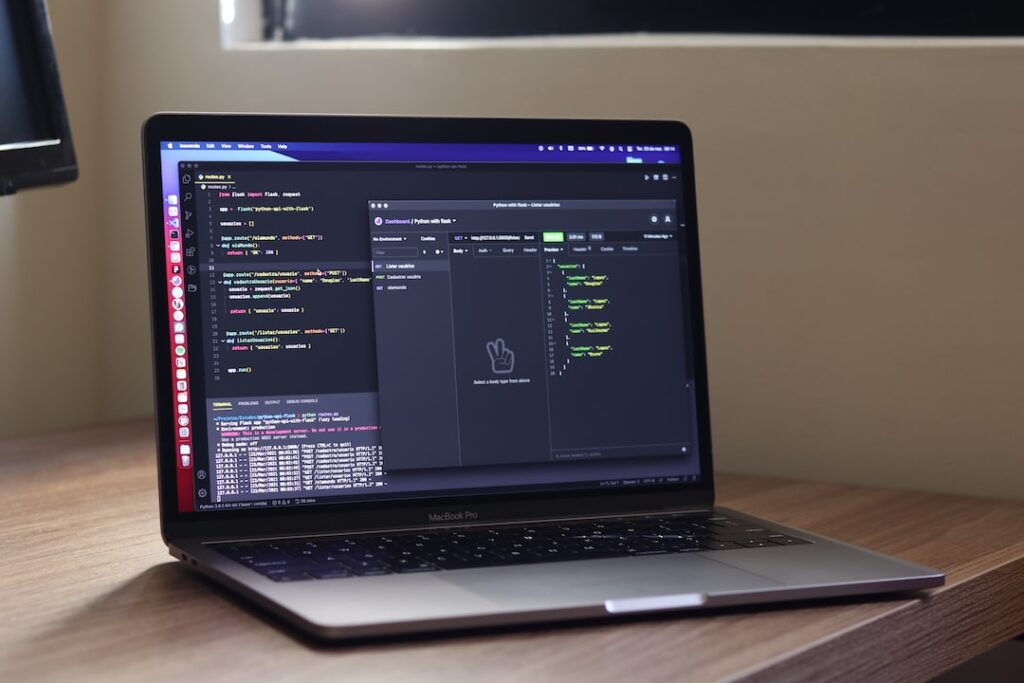
Where cyber threats are becoming increasingly sophisticated, organizations are turning to AI-driven solutions to enhance their security measures. By leveraging artificial intelligence, companies can proactively detect and respond to potential security breaches, minimizing the risk of sensitive data exposure and financial loss. AI-driven security solutions offer real-time threat intelligence, anomaly detection, and automated response capabilities, empowering businesses to stay one step ahead of cyber attackers. This proactive approach not only strengthens the overall security posture but also enables organizations to adapt to evolving threats in a dynamic environment. As the volume and complexity of cyber threats continue to rise, the integration of AI technologies is crucial for building robust defense mechanisms. This introduction sets the stage for exploring the transformative impact of AI-driven solutions in fortifying security infrastructure and safeguarding digital assets against malicious actors.
The Role of AI in Enhancing Security Measures
Artificial Intelligence (AI) has revolutionized the field of cybersecurity, playing a crucial role in enhancing security measures and safeguarding digital assets against evolving threats and vulnerabilities. Let’s delve deeper into how AI is transforming security practices:.
Threat Detection and Prevention
In the realm of cybersecurity, the ability to detect and prevent threats is paramount. AI-driven technologies have significantly improved threat detection capabilities. By utilizing sophisticated algorithms, AI empowers security systems to identify and analyze potential threats in real-time. This proactive approach enables organizations to swiftly respond to security incidents, minimizing the impact of cyberattacks.
Anomaly Detection
Anomalies in network traffic or user behavior often indicate potential security breaches. AI excels in anomaly detection by continuously monitoring and analyzing vast amounts of data. Through machine learning algorithms, AI systems can identify deviations from normal patterns, thus enabling early detection of suspicious activities. This proactive stance enhances the overall security posture by allowing organizations to address vulnerabilities before they are exploited.
Behavioral Analysis
Understanding user behavior is essential for effective security measures. AI technology facilitates comprehensive behavioral analysis by monitoring and evaluating user interactions within a network environment. By establishing baselines for normal behavior, AI systems can promptly detect deviations that may suggest malicious intent. This behavioral insight equips security teams with the information needed to preemptively mitigate risks and prevent potential security incidents.
Security Automation
Security automation is a cornerstone of modern cybersecurity strategies. AI-driven automation streamlines security processes, including threat response, incident investigation, and policy enforcement. By leveraging AI, organizations can enhance their security measures by automating routine tasks, improving response times, and reducing the burden on security teams. Furthermore, AI-driven automation enables adaptive security mechanisms that can dynamically adjust to emerging threats.
AI in Biometric Security
AI is also reshaping biometric security measures, providing advanced methods for identity verification. Biometric data, such as fingerprints or facial recognition, can be securely stored and analyzed using AI algorithms. This enhances authentication processes, making them more secure and reliable, especially in sensitive environments like financial institutions or government agencies.
AI in Cyber Threat Intelligence
AI plays a crucial role in cyber threat intelligence by analyzing vast amounts of data to predict and prevent cyberattacks. Through machine learning and natural language processing, AI can sift through complex datasets to identify patterns, trends, and potential vulnerabilities. This proactive approach helps organizations stay one step ahead of cyber threats, enabling them to bolster their defenses and preemptively address emerging risks.
Ethical Considerations in AI Security
As AI continues to shape security practices, ethical considerations become increasingly important. Issues such as data privacy, algorithmic biases, and transparency in AI decision-making processes need to be carefully addressed to ensure the responsible deployment of AI technologies in security applications. Organizations must prioritize ethical guidelines and regulatory compliance to maintain trust and integrity in their security practices.
AI’s role in enhancing security measures cannot be overstated. By harnessing AI technologies for threat detection, anomaly identification, behavioral analysis, security automation, biometric security, cyber threat intelligence, and ethical considerations, organizations can fortify their defenses and stay ahead of cyber threats. Embracing AI in cybersecurity is not just a strategic choice but a necessity in today’s digital landscape.
Applications and Benefits of AI in Security
Artificial Intelligence (AI) has revolutionized the field of cybersecurity, offering various applications and benefits that have significantly improved the overall security posture. In this blog section, we will explore three key areas where AI is making a significant impact on security operations:.
Improving Incident Response Time
- AI-powered systems can quickly analyze and detect security incidents, enabling organizations to respond promptly and effectively to mitigate potential threats.
- By leveraging machine learning algorithms, AI can not only detect known patterns but also identify anomalies that may indicate a novel attack vector.
- This swift response capability is crucial in today’s fast-paced threat landscape where every second counts in preventing a breach.
Enhancing Cyber Threat Intelligence
- AI algorithms can process vast amounts of data to identify patterns and trends, providing cybersecurity teams with valuable insights into emerging threats and vulnerabilities.
- AI can automate the collection and analysis of threat intelligence, allowing organizations to stay updated in real-time about the evolving threat landscape.
- By harnessing AI for threat intelligence, organizations can proactively identify and address potential vulnerabilities before they are exploited by malicious actors.
Mitigating Risks with Predictive Analysis
- By utilizing predictive analysis, AI can forecast potential security risks and help organizations proactively implement security measures to prevent cyber attacks.
- Through continuous monitoring and analysis of security data, AI systems can detect early warning signs of a breach and recommend preventive actions to bolster the security posture.
- This proactive approach to risk management empowers organizations to stay one step ahead of cyber threats and minimize the impact of security incidents.
Moreover, AI technologies such as natural language processing (NLP) and computer vision are being increasingly integrated into security solutions to enhance threat detection capabilities and facilitate rapid incident response. The convergence of AI and cybersecurity not only streamlines security operations but also enables organizations to adapt to the dynamic nature of cyber threats. AI-driven tools can autonomously analyze vast datasets, identify patterns, and respond to threats in real-time, providing a force multiplier for cybersecurity teams.
The integration of AI in security operations is essential for staying ahead of cyber threats in today’s digital landscape. As cyber attacks become more sophisticated, leveraging AI-driven security tools becomes imperative for organizations to fortify their defenses and safeguard sensitive data and systems from malicious actors. Embracing AI in cybersecurity not only enhances operational efficiency but also reinforces resilience against evolving cyber threats, ensuring a proactive defense strategy in an increasingly interconnected world.
Real-world Examples of AI-driven Security Solutions
Cybersecurity has become a critical concern for businesses of all sizes. With the increasing sophistication of cyber threats, companies are turning to artificial intelligence (AI) to enhance their security measures. Let’s delve into real-world examples of how AI-driven security solutions are being successfully implemented.
Case Study: Company X Utilizing AI for Cybersecurity
Company X, a leading tech firm, faced numerous cyber attacks that traditional security measures failed to thwart. By implementing AI-driven security solutions, Company X was able to analyze vast amounts of data in real-time, identify potential threats, and proactively respond to cyber attacks. The AI system continuously learns and adapts to new threats, providing Company X with a robust defense mechanism.
Success Stories in Implementing AI for Security
Several companies across various industries have witnessed significant success in implementing AI for security. From predictive threat analysis to behavioral biometrics, AI has revolutionized how organizations safeguard their digital assets. One notable success story is Company Y, a financial institution that saw a 60% reduction in security incidents after deploying AI-powered solutions.
The adoption of AI in cybersecurity is not limited to large corporations. Small and medium-sized enterprises (SMEs) are also benefiting from AI-driven security solutions. By leveraging AI algorithms, SMEs can detect anomalies, predict potential threats, and automate incident response, leveling the playing field against cyber attackers.
Moreover, the evolution of AI capabilities, such as machine learning and natural language processing, has enabled security systems to detect and prevent sophisticated attacks, including ransomware and phishing schemes. These advanced AI tools empower organizations to stay ahead of cyber threats and protect their sensitive data.
Looking ahead, the integration of AI with other technologies like blockchain and IoT holds promise for creating a more secure digital ecosystem. By combining AI’s predictive capabilities with blockchain’s tamper-proof ledger and IoT’s interconnected devices, businesses can establish a comprehensive security framework that mitigates risks across multiple fronts.
As the cybersecurity landscape continues to evolve, AI-driven security solutions will remain at the forefront of defense strategies. Stay informed about the latest advancements in AI technology and their impact on safeguarding digital assets. Together, we can build a more resilient and secure digital future.
Addressing Challenges and Ethical Considerations
Data Privacy Concerns and Compliance
In this era of big data and AI, one of the major concerns is the protection of individuals’ data privacy. Companies collecting vast amounts of data must ensure compliance with data privacy regulations such as GDPR and CCPA to safeguard user information. Implementing robust data anonymization techniques, encryption methods, and access controls are essential steps to protect sensitive data. Regular audits and assessments should be conducted to ensure ongoing compliance and data security. Additionally, organizations should prioritize building a privacy-first culture, where data protection is ingrained in every aspect of their operations. This involves promoting user trust through transparent data practices, offering clear opt-in mechanisms, and providing users with control over their data.
Mitigating Bias in AI Algorithms
AI algorithms are only as good as the data they are trained on. Bias in AI algorithms can lead to discriminatory outcomes, reinforcing stereotypes and perpetuating inequalities. To address this challenge, organizations need to diversify their data sources, incorporate fairness metrics during model training, and employ bias detection tools to identify and rectify biases. Furthermore, promoting diversity and inclusivity in AI development teams can help mitigate bias and enhance algorithm fairness. Emphasizing the importance of continuous bias monitoring and mitigation strategies is crucial to ensure that AI systems make fair and unbiased decisions across diverse populations.
Ensuring Ethical Use of AI in Security
The deployment of AI in security applications, such as facial recognition and surveillance, raises ethical concerns regarding privacy invasion and potential misuse. To ensure ethical use, organizations should prioritize transparency in AI systems, clearly communicate the purpose and scope of data collection and processing, and obtain explicit consent from individuals. Additionally, establishing oversight mechanisms, such as ethics review boards, can provide independent assessments of AI applications in security to prevent abuses and uphold ethical standards. Collaborating with regulatory bodies and engaging in public discourse on AI ethics can foster a culture of responsible AI deployment that respects individuals’ rights and promotes societal well-being. It is imperative for organizations to not only focus on the technical aspects of AI security but also consider the broader ethical implications, including the impact on civil liberties, human rights, and societal trust in AI systems.
The Future Landscape of AI-driven Security
Emerging Technologies in AI Security Solutions.
In this rapidly evolving digital landscape, the role of artificial intelligence (AI) in security solutions is becoming increasingly prominent. From machine learning algorithms to predictive analytics, AI is revolutionizing the way we approach cybersecurity. This section will explore the latest emerging technologies in AI security solutions and how they are shaping the future of digital defense. One of the key advancements in AI security solutions is the use of deep learning algorithms to detect anomalies and identify potential threats in real-time, enabling organizations to proactively defend against cyber attacks. Moreover, AI-driven security solutions are now incorporating natural language processing (NLP) to analyze text data and detect suspicious patterns, enhancing threat detection capabilities.
AI Integration with IoT and Cloud Security
As the Internet of Things (IoT) continues to expand and cloud computing becomes ubiquitous, the need for robust security measures is more critical than ever. AI offers a powerful tool for enhancing IoT and cloud security by providing real-time threat detection, behavior analysis, and adaptive response capabilities. In addition to threat detection, AI algorithms can also optimize resource allocation in cloud environments, ensuring efficient and secure operations. This part of the blog will delve into the integration of AI with IoT and cloud security protocols and its implications for safeguarding sensitive data in interconnected environments. Furthermore, AI’s ability to learn from vast amounts of data can lead to the development of more sophisticated anomaly detection models in IoT networks, bolstering overall security.
Predictions for AI’s Impact on Future Security Strategies
Looking ahead, the trajectory of AI-driven security solutions presents a myriad of possibilities and challenges. From autonomous cyber defense systems to AI-powered incident response mechanisms, the future of security strategies is poised for a significant transformation. As AI continues to evolve, it is expected to play a central role in automating cybersecurity processes, enabling organizations to respond to threats at machine speed. Furthermore, AI is anticipated to enhance collaboration between human analysts and automated systems, creating a more effective defense strategy against sophisticated cyber threats. This segment will discuss expert predictions on how AI will continue to influence and redefine the landscape of cybersecurity practices, offering insights into what to expect in the coming years and how organizations can prepare for the AI-driven future of security. With the rise of quantum computing, AI is also likely to be leveraged for developing quantum-safe encryption methods, ensuring data protection in the face of advanced computing capabilities.
AI Security Implementation Best Practices
The integration of Artificial Intelligence (AI) into various aspects of our lives has become increasingly prevalent. From smart homes to autonomous vehicles, AI systems have proven to be powerful tools in enhancing efficiency and productivity. However, with this advancement comes the critical need for robust AI security implementation. In this blog section, we will delve into the best practices for ensuring the security of AI systems.
Collaboration Between Humans and AI Systems
One of the fundamental aspects of AI security is the collaboration between humans and AI systems. While AI can automate processes and analyze vast amounts of data at speeds incomprehensible to humans, it is essential to have human oversight. Humans can provide context, ethical judgment, and intervention in case of unforeseen circumstances. Establishing clear communication channels between human operators and AI systems is crucial for maintaining a secure environment.
Continuous Learning and Adaptation
AI systems are not static entities; they continuously learn and adapt based on the data they receive. This characteristic poses both opportunities and challenges for AI security. To enhance security, it is imperative to implement mechanisms that allow AI systems to adapt to new threats and vulnerabilities. Regular updates, patches, and monitoring can help in mitigating risks and ensuring the resilience of AI security systems.
Testing and Validation of AI Security Systems
Testing and validation are integral components of AI security implementation. Rigorous testing procedures, including penetration testing, vulnerability assessments, and scenario-based simulations, can help in identifying weaknesses in AI systems. Additionally, validation processes ensure that AI systems meet the required security standards and regulatory compliance. By conducting thorough testing and validation, organizations can proactively address security gaps and enhance the overall integrity of their AI systems.
The implementation of AI security best practices is essential in safeguarding AI systems from potential threats and vulnerabilities. By fostering collaboration between humans and AI systems, promoting continuous learning and adaptation, and prioritizing rigorous testing and validation, organizations can establish a strong foundation for AI security. As AI continues to reshape industries and redefine possibilities, a proactive approach to security is paramount in harnessing the full potential of artificial intelligence.
Measuring Success: Metrics and Evaluation
Key Performance Indicators for AI Security Solutions
In the fast-evolving landscape of cybersecurity, the importance of implementing AI security solutions cannot be overstated. These solutions are designed to bolster defenses against sophisticated cyber threats and attacks by leveraging advanced technologies such as machine learning and behavioral analytics. However, to truly assess the effectiveness and success of AI security solutions, organizations need to establish and monitor specific Key Performance Indicators (KPIs) tailored to their unique security requirements.
Some crucial KPIs that organizations should consider include:.
-
Threat Detection Rate: This metric measures the AI system’s ability to accurately detect and respond to potential threats in real time, thereby minimizing the risk of security breaches.
-
False Positive Rate: Evaluating the rate of false positives generated by the AI system is essential to avoid unnecessary alerts and ensure efficient resource allocation for threat mitigation.
-
Incident Response Time: The speed at which the AI system identifies and responds to security incidents is a critical factor in minimizing the impact of cyber attacks and reducing downtime.
Assessing ROI and Effectiveness of AI Implementations
In addition to monitoring KPIs, organizations must also focus on evaluating the return on investment (ROI) and overall effectiveness of integrating AI technologies into their cybersecurity frameworks. Understanding the tangible benefits derived from AI implementations is key to making informed decisions regarding resource allocation and future investments.
To measure the ROI and effectiveness of AI implementations, organizations can consider the following approaches:.
-
Cost Savings: Analyzing the cost savings achieved through automated threat detection, incident response, and resource optimization enabled by AI security solutions.
-
Enhanced Threat Intelligence: Assessing the improvement in threat intelligence capabilities, such as faster threat identification and proactive risk management, resulting from AI integration.
-
Compliance Adherence: Evaluating the level of compliance with industry regulations and standards facilitated by AI technologies, leading to reduced regulatory penalties and reputational risks.
By strategically leveraging these metrics and evaluation methods, organizations can not only quantify the impact of their AI security initiatives but also make data-driven decisions to continuously enhance their cybersecurity posture and stay ahead of evolving cyber threats.
The provided topic: Enhancing Security with AI-driven Solutions
Incorporating AI-driven solutions into security measures has proven to be highly effective in addressing modern-day threats and vulnerabilities. The ability of AI to analyze vast amounts of data, detect patterns, and adapt to evolving risks makes it a crucial tool in enhancing security across various industries. As technology continues to advance, leveraging AI for security purposes will undoubtedly play a key role in safeguarding sensitive information, infrastructure, and individuals from potential security breaches.







